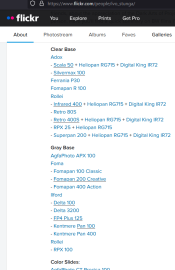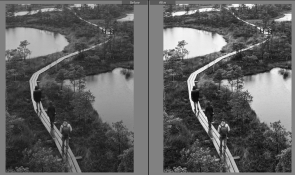I feel there's some demystifying to be done in the world of BW Reversal, but I'm nearly not enough technically educated to to this - so I'll point out some curiosities out of my experience instead.
Over the years I've:
1) read some religious stories about this film being incompatible with reversal and that film being the best one for it...
2) heard KMN04 bleach being pain in the ass and totally unusable...
3) seen commercial entities shitting on Ilford recipe for no apparent (except commercial) reason, providing subpar, poorly made examples...
4) time and time again been exposed to info that only clear base films are compatible...
5) seen people having problems with T-grain films, thinking that they surely have compatibility issues.
And all that being just... Wrong in my humble experience of throwing any film at Ilford reversal recipe I'm using.
1) As of today I've had trouble reversing one film. An ancient soviet SVEMA with green base - overdevelops to whiteout in a mere minute.
Stand reversal works fine, though, but PQ Universal creates Bromide drag effect, intermittent agitation could possibly fix this.
2) If permanganate bleach is giving your emulsion problems, dilute it and/or reduce bleaching time. I use mine quite dilute and have experienced just three instances of emulsion damage.
3) DR5
4) All BW films I've tried thus far are 100% compatible. I've reversed 20 unique films and do intend to carry on. Hell, I've even got nice pics from expired
C-41 and E-6 films.
5) add hypo to first developer.
Examples? Available on my Flickr, done with minimum Lightroom time - links to specific examples to be found in About:
https://www.flickr.com/people/ivo_stunga/










